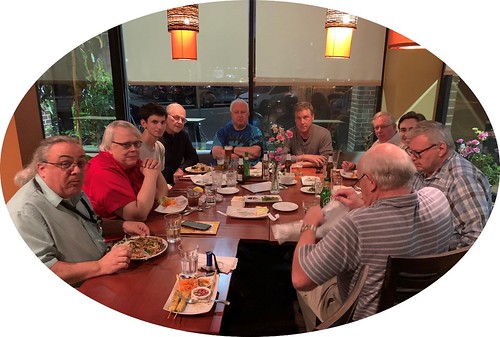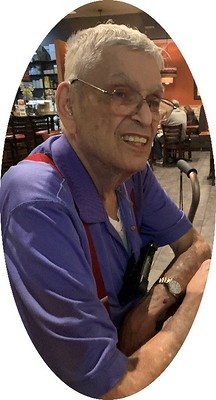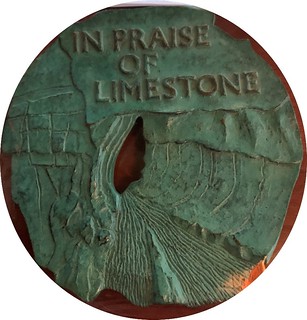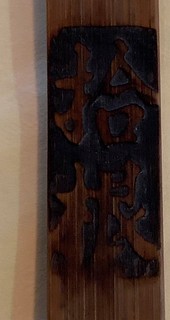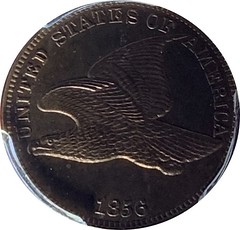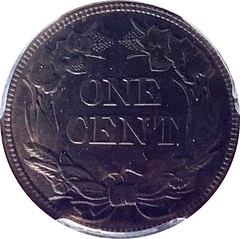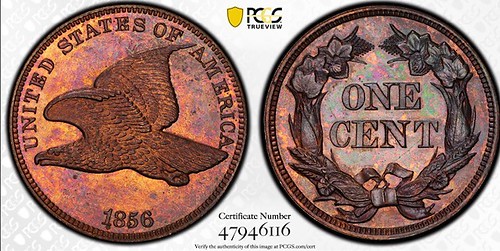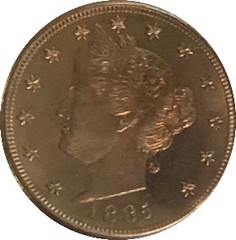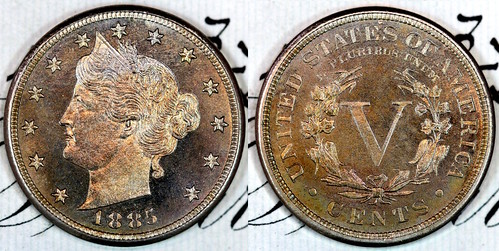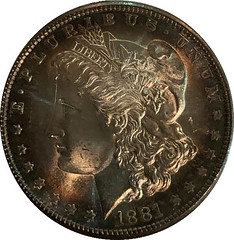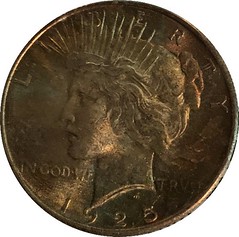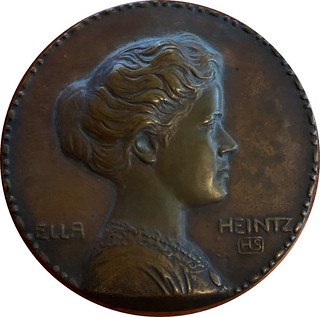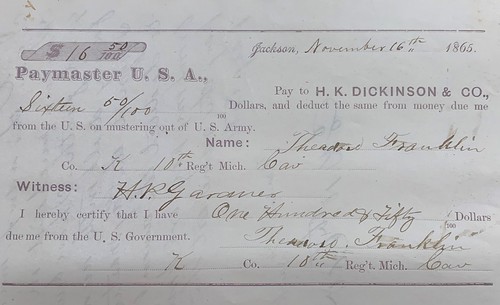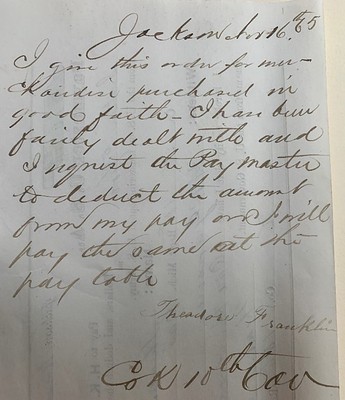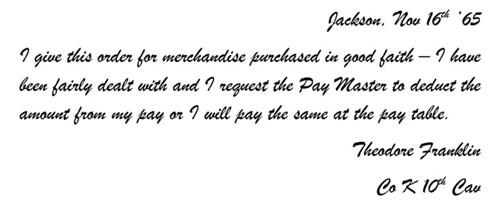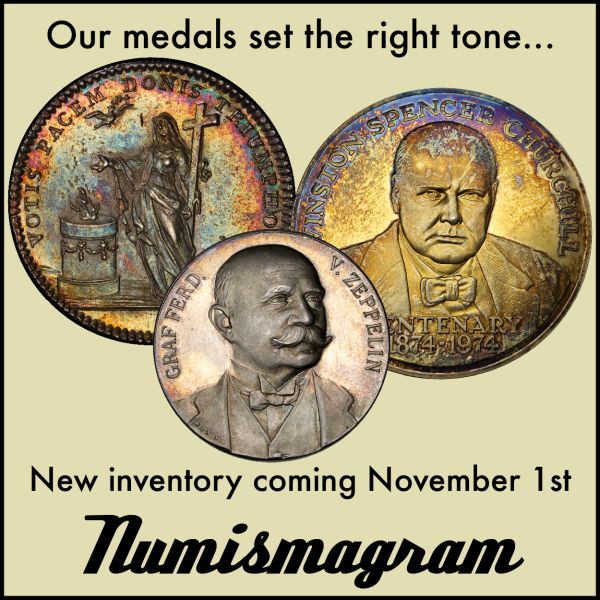
PREV ARTICLE
NEXT ARTICLE
FULL ISSUE
PREV FULL ISSUE
TOM'S NUMISMATIC DIARY: OCTOBER 29, 2023Last Tuesday, October 17th, I attended the monthly meeting of my Northern Virginia Numismatic Social group, Nummis Nova. Member Tom Kays kindly provided this nicely illustrated account of the evening. Thank you! I didn't manage to get it into last week's issue, but here goes. Some great numismatic material went around the table. -Editor
Nummis Nova October 2023 Notes
The public has got to wonder what this unusual bunch is up to as they pass around strange talismans in hushed tones and speak in numismatic tongues. Arcane and obscure incantations like In the quest to bring something new to these dinners to impress Nummis Nova potentates a Flying Eagle cent was offered up. ‘Ho Hum' you say? ‘Seen that' you say?
Did I mention it was dated ‘1856' making it one of approximately one thousand minted? Impressed yet? Did I mention it was graded Proof-65, Brown, by PCGS? You might be a little impressed now, but wait…did I mention it was a pattern cent of the variety: Judd-181, Pollock-211, a ‘Snow-1' die variety with tilting
Steve Bishop writes: "Among other things, I brought a nicely toned 1885 Liberty V nickel. Had a good discussion with Daryl Haynor about whether it was a business strike or a proof. Daryl finally concluded, after looking at the pictures I sent him, that is was a proof. A shame, since a business strike in nice condition is worth considerably more that a proof, despite the proof's lower mintage." Lastly, here is an ephemeral ‘whatchamacalit' tendered after the Civil War (no longer to be termed a sutler item?) from a clothing establishment that catered to returning soldiers with empty pockets, needing civilian clothes and owed Army backpay. This is a pre-printed paymaster ticket by H. K. Dickinson & Co., Clothier in Jackson City, Michigan to Paymaster U. S. A., for Michigan soldiers to sign away money due them from the Government after mustering out of the U. S. Army at the end of the Civil War. The U.S. Army offered a bonus of $100 for joining and $16 per month in 1865. With the war winding down the signing bonus must have been attractive. Theodore Franklin of Eaton County, Michigan enlisted in Company K, 10th Michigan Cavalry (about a month before the end of the war) at Rives on March 6, 1865 for a one-year enlistment at 21 years old. It took him two months to report for duty, joining his regiment in Lenoir, Tennessee on June 28th, 1865 (nearly two months after the war had ended). He was mustered out at Memphis, Tennessee on November 11, 1865, and five days later had made his way back to Michigan. Shopping at H. K. Dickinson & Co., Clothier he spent a months' pay on November 16th, by signing a pre-printed pay slip against his $150 U.S. Army enlistment bounty and back pay. He endorsed the payment as follows: As always, Nummis Nova discussions ranged far and wide, high and low, from the beginning of coinage to what happened last week, and most importantly, how much importance should be placed on all the little chili pepper icons trailing after each Thai Restaurant dish listed on the menu.
Wayne Homren, Editor The Numismatic Bibliomania Society is a non-profit organization promoting numismatic literature. See our web site at coinbooks.org. To submit items for publication in The E-Sylum, write to the Editor at this address: whomren@gmail.com To subscribe go to: https://my.binhost.com/lists/listinfo/esylum All Rights Reserved. NBS Home Page Contact the NBS webmaster 
|
